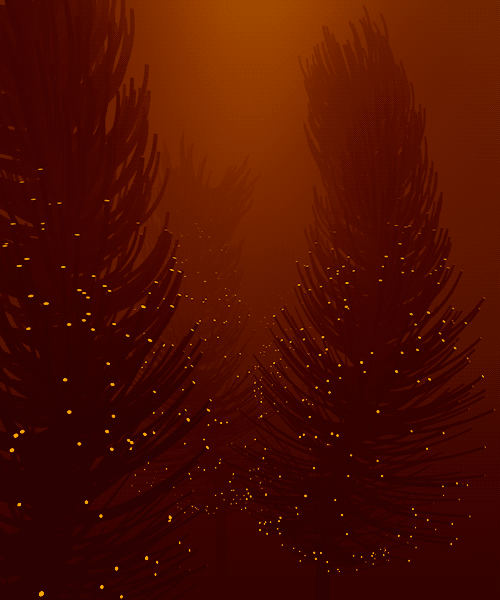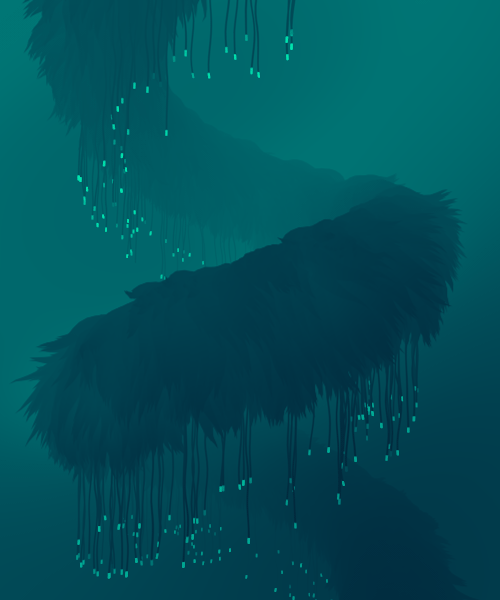Allisoncheri - Allisoncheri




More Posts from Allisoncheri and Others
So apparently last year the National Park Service in the US dropped an over 1200 page study of LGBTQ American History as part of their Who We Are program which includes studies on African-American history, Latino history, and Indigenous history.
Like. This is awesome. But also it feels very surreal that maybe one of the most comprehensive examinations of LGBTQ history in America (it covers sports! art! race! historical sites! health! cities!) was just casually done by the parks service.

TODAY IN HISTORY: The rings of Saturn, August 17, 1981, in an enhanced view from the Voyager 2 space probe, assembled from clear, orange and ultraviolet frames taken at a distance of 8.9 million km (5.5 million miles).
(NASA)
Celebrating 17 Years of NASA’s ‘Little Earth Satellite That Could’
The satellite was little— the size of a small refrigerator; it was only supposed to last one year and constructed and operated on a shoestring budget — yet it persisted.
After 17 years of operation, more than 1,500 research papers generated and 180,000 images captured, one of NASA’s pathfinder Earth satellites for testing new satellite technologies and concepts comes to an end on March 30, 2017. The Earth Observing-1 (EO-1) satellite will be powered off on that date but will not enter Earth’s atmosphere until 2056.
“The Earth Observing-1 satellite is like The Little Engine That Could,” said Betsy Middleton, project scientist for the satellite at NASA’s Goddard Space Flight Center in Greenbelt, Maryland.
To celebrate the mission, we’re highlighting some of EO-1’s notable contributions to scientific research, spaceflight advancements and society.
Scientists Learn More About Earth in Fine Detail

This animation shifts between an image showing flooding that occurred at the Arkansas and Mississippi rivers on January 12, 2016, captured by ALI and the rivers at normal levels on February 14, 2015 taken by the Operational Land Imager on Landsat 8. Credit: NASA’s Earth Observatory
EO-1 carried the Advanced Land Imager that improved observations of forest cover, crops, coastal waters and small particles in the air known as aerosols. These improvements allowed researchers to identify smaller features on a local scale such as floods and landslides, which were especially useful for disaster support.

On the night of Sept. 6, 2014, EO-1’s Hyperion observed the ongoing eruption at Holuhraun, Iceland as shown in the above image. Partially covered by clouds, this scene shows the extent of the lava flows that had been erupting.
EO-1’s other key instrument Hyperion provided an even greater level of detail in measuring the chemical constituents of Earth’s surface— akin to going from a black and white television of the 1940s to the high-definition color televisions of today. Hyperion’s level of sophistication doesn’t just show that plants are present, but can actually differentiate between corn, sorghum and many other species and ecosystems. Scientists and forest managers used these data, for instance, to explore remote terrain or to take stock of smoke and other chemical constituents during volcanic eruptions, and how they change through time.
Crowdsourced Satellite Images of Disasters

EO-1 was one of the first satellites to capture the scene after the World Trade Center attacks (pictured above) and the flooding in New Orleans after Hurricane Katrina. EO-1 also observed the toxic sludge in western Hungary in October 2010 and a large methane leak in southern California in October 2015. All of these scenes, which EO-1 provided quick, high-quality satellite imagery of the event, were covered in major news outlets. All of these scenes were also captured because of user requests. EO-1 had the capability of being user-driven, meaning the public could submit a request to the team for where they wanted the satellite to gather data along its fixed orbits.

This image shows toxic sludge (red-orange streak) running west from an aluminum oxide plant in western Hungary after a wall broke allowing the sludge to spill from the factory on October 4, 2010. This image was taken by EO-1’s Advanced Land Imager on October 9, 2010. Credit: NASA’s Earth Observatory
Artificial Intelligence Enables More Efficient Satellite Collaboration

This image of volcanic activity on Antarctica’s Mount Erebus on May 7, 2004 was taken by EO-1’s Advanced Land Imager after sensing thermal emissions from the volcano. The satellite gave itself new orders to take another image several hours later. Credit: Earth Observatory
EO-1 was among the first satellites to be programmed with a form of artificial intelligence software, allowing the satellite to make decisions based on the data it collects. For instance, if a scientist commanded EO-1 to take a picture of an erupting volcano, the software could decide to automatically take a follow-up image the next time it passed overhead. The Autonomous Sciencecraft Experiment software was developed by NASA’s Jet Propulsion Laboratory in Pasadena, California, and was uploaded to EO-1 three years after it launched.

This image of Nassau Bahamas was taken by EO-1’s Advanced Land Imager on Oct 8, 2016, shortly after Hurricane Matthew hit. European, Japanese, Canadian, and Italian Space Agency members of the international coalition Committee on Earth Observation Satellites used their respective satellites to take images over the Caribbean islands and the U.S. Southeast coastline during Hurricane Matthew. Images were used to make flood maps in response to requests from disaster management agencies in Haiti, Dominican Republic, St. Martin, Bahamas, and the U.S. Federal Emergency Management Agency.
The artificial intelligence software also allows a group of satellites and ground sensors to communicate and coordinate with one another with no manual prompting. Called a “sensor web”, if a satellite viewed an interesting scene, it could alert other satellites on the network to collect data during their passes over the same area. Together, they more quickly observe and downlink data from the scene than waiting for human orders. NASA’s SensorWeb software reduces the wait time for data from weeks to days or hours, which is especially helpful for emergency responders.
Laying the Foundation for ‘Formation Flying’

This animation shows the Rodeo-Chediski fire on July 7, 2002, that were taken one minute apart by Landsat 7 (burned areas in red) and EO-1 (burned areas in purple). This precision formation flying allowed EO-1 to directly compare the data and performance from its land imager and the Landsat 7 ETM+. EO-1’s most important technology goal was to test ALI for future Landsat satellites, which was accomplished on Landsat 8. Credit: NASA’s Goddard Space Flight Center
EO-1 was a pioneer in precision “formation flying” that kept it orbiting Earth exactly one minute behind the Landsat 7 satellite, already in orbit. Before EO-1, no satellite had flown that close to another satellite in the same orbit. EO-1 used formation flying to do a side-by-side comparison of its onboard ALI with Landsat 7’s operational imager to compare the products from the two imagers. Today, many satellites that measure different characteristics of Earth, including the five satellites in NASA’s A Train, are positioned within seconds to minutes of one another to make observations on the surface near-simultaneously.
For more information on EO-1’s major accomplishments, visit: https://www.nasa.gov/feature/goddard/2017/celebrating-17-years-of-nasa-s-little-earth-satellite-that-could
Make sure to follow us on Tumblr for your regular dose of space: http://nasa.tumblr.com/.
you wanna see some badass shit from the early 20th century?? The Lumière brothers created the first full color photograph… in fucking 1903! So these dudes dyed potatoes (in red, blue, and green), mashed them down into just pure fuckin’ starch, and used these dyed potato starches as filters to block out/let in certain wavelengths of light. They coated one side of a glass plate with the starches and sensitized the other side with a mixture of gelatin and light sensitive materials (silver nitrate) and loaded these plates in their cameras.. This is a really simple explanation of the process and I may have missed some things A few of my favorite autochrome photos:










Mt. St. Helens
I’ll have limited copies of this in print at VanCAF17 this weekend, come see me at table D-11!



Hidden Portraits: Nikola Tesla
Nikola Tesla was an inventor, engineer, physicist and futurist. He arrived in the U.S. in 1884 and quickly catapulted his career by working with Thomas Edison, creating more than 700 patents and making major breakthroughs in modern alternating current (AC) electricity.
He’s featured in the Art with Watson series, Hidden Portraits. 15 artists teamed up with Watson to discover and illuminate the unknown essence of seven of history’s greatest thinkers using data.
What Watson thinks: Watson’s analysis of Tesla’s works revealed a new side of the famed inventor – as an artist at heart.
About the artwork: The Artist Inside was inspired by Tesla’s conflicted, dual personas: the scientist and the artist. The mirrored cube represents Tesla’s mind, with the inner electric grid representing his fame as a well-known scientist. The generative art that come alive inside the cube speaks to Tesla’s lesser-known artistic side, uncovered with Watson.
Explore Tesla’s Hidden Portrait ->
-
 electrospider7813 reblogged this · 3 weeks ago
electrospider7813 reblogged this · 3 weeks ago -
 xx-dark-dart-xx liked this · 1 month ago
xx-dark-dart-xx liked this · 1 month ago -
 stale-cornflakes liked this · 1 month ago
stale-cornflakes liked this · 1 month ago -
 ewoly5 liked this · 1 month ago
ewoly5 liked this · 1 month ago -
 that-one-loz-nerd reblogged this · 1 month ago
that-one-loz-nerd reblogged this · 1 month ago -
 that-one-loz-nerd liked this · 1 month ago
that-one-loz-nerd liked this · 1 month ago -
 whatcouldpossiblyg0wr0ng liked this · 1 month ago
whatcouldpossiblyg0wr0ng liked this · 1 month ago -
 whatcouldpossiblyg0wr0ng reblogged this · 1 month ago
whatcouldpossiblyg0wr0ng reblogged this · 1 month ago -
 cocopurplepompom reblogged this · 1 month ago
cocopurplepompom reblogged this · 1 month ago -
 cocopurplepompom liked this · 1 month ago
cocopurplepompom liked this · 1 month ago -
 technologyvoid reblogged this · 1 month ago
technologyvoid reblogged this · 1 month ago -
 idontknow13538 liked this · 1 month ago
idontknow13538 liked this · 1 month ago -
 21oopsadaisies liked this · 2 months ago
21oopsadaisies liked this · 2 months ago -
 niazix liked this · 2 months ago
niazix liked this · 2 months ago -
 jamalexlee liked this · 3 months ago
jamalexlee liked this · 3 months ago -
 kittytikara reblogged this · 4 months ago
kittytikara reblogged this · 4 months ago -
 brainybl5-blog liked this · 4 months ago
brainybl5-blog liked this · 4 months ago -
 hottakehoulihan liked this · 4 months ago
hottakehoulihan liked this · 4 months ago -
 osamudadzai liked this · 4 months ago
osamudadzai liked this · 4 months ago -
 lobotomommy reblogged this · 4 months ago
lobotomommy reblogged this · 4 months ago -
 atouchofadhd liked this · 5 months ago
atouchofadhd liked this · 5 months ago -
 piss-accomplice reblogged this · 5 months ago
piss-accomplice reblogged this · 5 months ago -
 rachelisce reblogged this · 5 months ago
rachelisce reblogged this · 5 months ago -
 girllikescats liked this · 5 months ago
girllikescats liked this · 5 months ago -
 dragonkales liked this · 5 months ago
dragonkales liked this · 5 months ago -
 epimetheusdean liked this · 5 months ago
epimetheusdean liked this · 5 months ago -
 3-striiikes reblogged this · 5 months ago
3-striiikes reblogged this · 5 months ago -
 whenitgrowsbright reblogged this · 5 months ago
whenitgrowsbright reblogged this · 5 months ago -
 laiosmichelinstardungeon liked this · 5 months ago
laiosmichelinstardungeon liked this · 5 months ago -
 thechroniclegames reblogged this · 6 months ago
thechroniclegames reblogged this · 6 months ago -
 burgershapedidiot reblogged this · 6 months ago
burgershapedidiot reblogged this · 6 months ago -
 burgershapedidiot liked this · 6 months ago
burgershapedidiot liked this · 6 months ago -
 the-acid-pear reblogged this · 6 months ago
the-acid-pear reblogged this · 6 months ago -
 tl-c-sugarskulls liked this · 6 months ago
tl-c-sugarskulls liked this · 6 months ago -
 nereaddict reblogged this · 6 months ago
nereaddict reblogged this · 6 months ago -
 waytoocrispybread reblogged this · 6 months ago
waytoocrispybread reblogged this · 6 months ago -
 annita899gdlg8deh liked this · 6 months ago
annita899gdlg8deh liked this · 6 months ago -
 willow-trees-are-beautiful liked this · 6 months ago
willow-trees-are-beautiful liked this · 6 months ago -
 rabbithearteddoll liked this · 6 months ago
rabbithearteddoll liked this · 6 months ago -
 starswordneo liked this · 7 months ago
starswordneo liked this · 7 months ago -
 fundiscrimination liked this · 7 months ago
fundiscrimination liked this · 7 months ago -
 caffeinatedcutie3 liked this · 7 months ago
caffeinatedcutie3 liked this · 7 months ago -
 yuijiro liked this · 7 months ago
yuijiro liked this · 7 months ago -
 r1-2020 liked this · 7 months ago
r1-2020 liked this · 7 months ago -
 cacklesmaniacally reblogged this · 7 months ago
cacklesmaniacally reblogged this · 7 months ago -
 cacklesmaniacally liked this · 7 months ago
cacklesmaniacally liked this · 7 months ago -
 mintypup27 reblogged this · 7 months ago
mintypup27 reblogged this · 7 months ago -
 mintypup27 liked this · 7 months ago
mintypup27 liked this · 7 months ago -
 soul-sparx reblogged this · 7 months ago
soul-sparx reblogged this · 7 months ago












